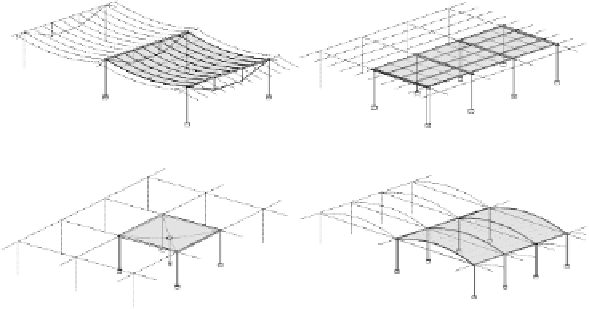Environmental Engineering Reference
In-Depth Information
the tower height (i.e. proportional to the volume of the cylinder shown in
Fig. 5.26).
Since the electrical output of a solar updraft tower power plant is thus propor-
tional to the volume of the cylinder created by the tower height and the collector
surface, a certain capacity can either be achieved by a high tower in combination
with a small collector or by a big collector and a smaller tower. There is thus a
"classic" technical/economic optimisation problem to be solved.
5.5.1
Technical description
In the following, the technology of solar updraft tower power plants, including all
related components, is described.
5.5.1.1
System components
In the following, the individual components of such a power plant are presented
and discussed.
Collector.
The hot air required for the operation of a solar updraft tower power
plant is created by a simple air collector. The latter consists of a horizontal trans-
lucent glass or plastic roof located approximately 2 to 6 m above ground
(Fig. 5.27).
The translucent roof is permeable by solar radiation, but impermeable by the
long-wave heat radiation emitted by the collector bottom, which is heated up by
the sun. This is why the bottom underneath the roof is heated strongly and trans-
mits heat to the air, flowing radially from the exterior to the tower, thereby warm-
ing the air.
Fig. 5.27
Collector variants suitable for solar updraft tower power plants /5-27/, /5-28/






Search WWH ::

Custom Search